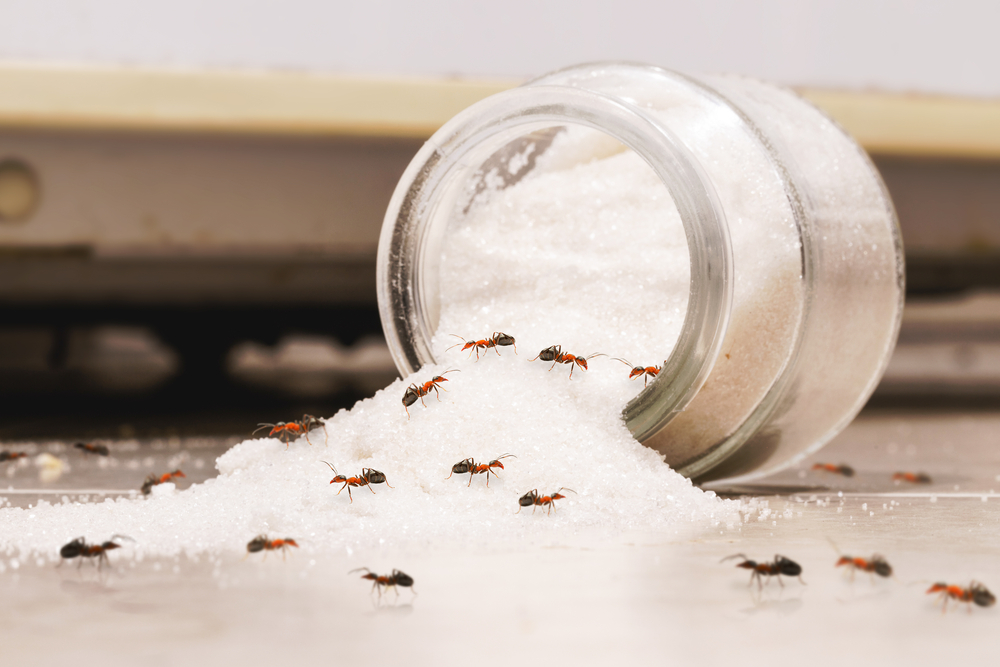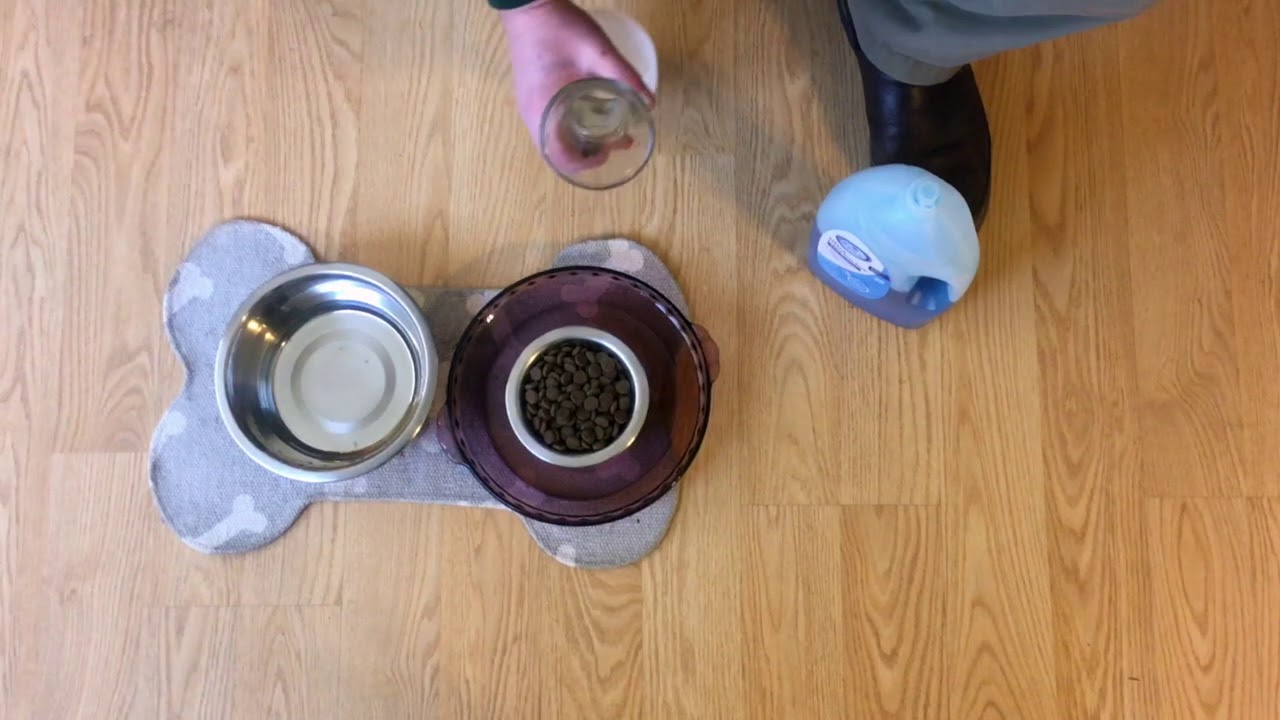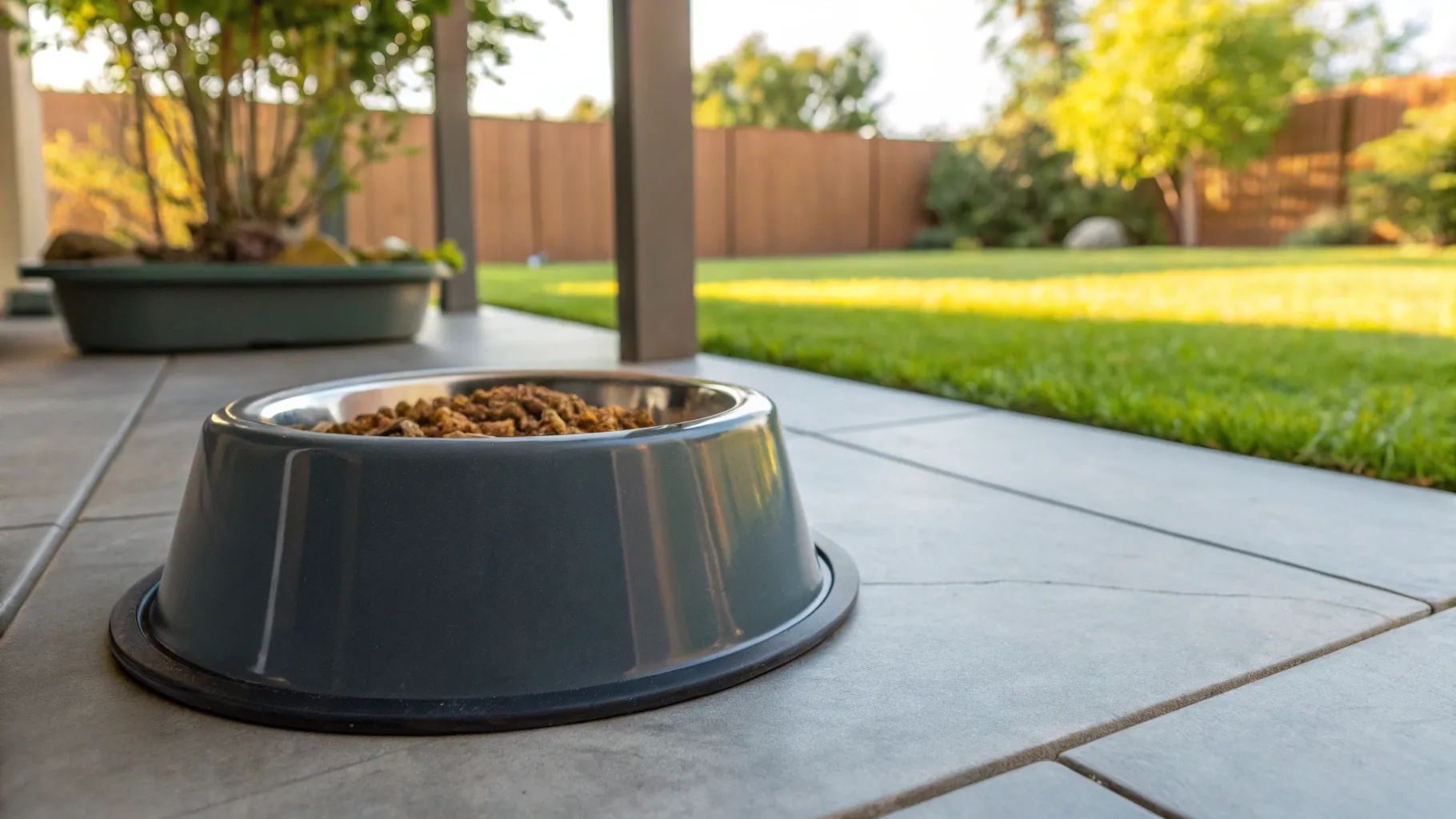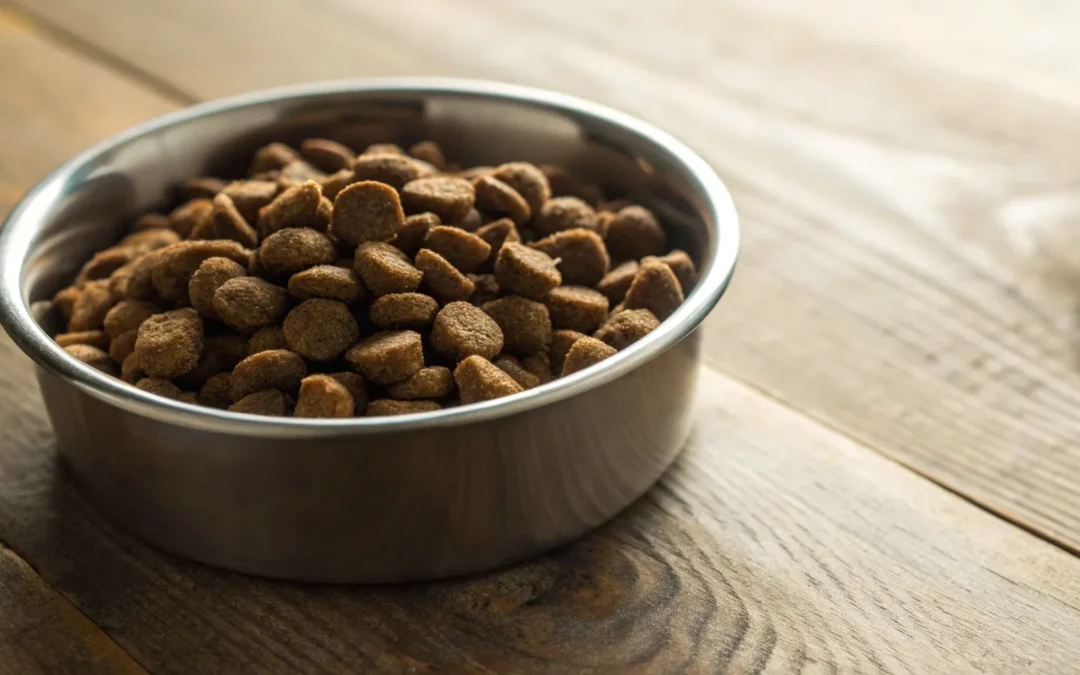Nothing’s more frustrating than finding a trail of ants invading my dog’s food bowl. I want my pup’s meals to stay fresh and safe but those tiny invaders seem to show up out of nowhere. It’s not just about the mess—ants can also contaminate the food and make me worry about my dog’s health.
I’ve learned that keeping ants away isn’t impossible with a few smart strategies. By making a few simple changes at home I can protect my dog’s food and keep those pests at bay. Let me share what’s worked for me so you can keep your dog’s meals ant-free too.
Why Ants Are Attracted to Dog Food

Why-Ants-Are-Attracted-to-Dog-Food
Ants target dog food because it contains nutrients like proteins, fats, and sugars. Dry kibble, canned formulas, and dog treats each release specific scents that ants quickly detect. Gravy-based or moist foods draw more ants since moisture provides hydration along with accessible calories.
Food crumbs, spills, and leftover bits around feeding stations contribute to ongoing ant activity. When kibble or treats sit in open bowls or on the ground, ant scouts mark the area with pheromones that signal colony members to collect the accessible resource. Rapid infestations follow these chemical trails.
Different dog food ingredients attract distinct ant species. Sugar ants prefer carbohydrate-rich food, while protein-focused carpenter ants and fire ants seek out meat and high-protein content. According to an entomology study from the University of California (2022), fatty pet foods increase the attraction of protein-loving ant species by 48%.
| Ant Species | Attractants in Dog Food | Attraction Level |
|---|---|---|
| Sugar ants | Sugars, starches | High |
| Carpenter ants | Proteins, fats | Moderate |
| Fire ants | Meats, proteins, water | High |
| Pavement ants | Crumbs, all food types | Moderate |
| Ingredient Type | Scent Strength | Common Ant Reaction |
|---|---|---|
| Wet/meaty foods | High | Strong attraction |
| Dry kibble | Moderate | Frequent foraging |
| Biscuit treats | Low to moderate | Occasional visits |
Once ants access dog food, they return repeatedly while a food source remains available.
Preventative Measures to Keep Ants Away
Ants access dog food mainly due to its strong scent and easy availability. I’ve found a mix of correct storage, routine cleaning, and choosing the right tools protects my dog’s meals best.
Store Dog Food Properly
I always store dry or wet dog food in airtight containers. These sealed bins prevent scent leaks and block entry points ants use. Plastic and metal containers with tight lids keep both the aroma and ants inside out of reach.
| Storage Method | Effectiveness vs. Ants | Best For |
|---|---|---|
| Original packaging | Low | Short-term use |
| Unsealed bins | Low | Quick access, not pest-proof |
| Airtight containers | High | Long-term freshness, ant prevention |
| Metal food bins | Very high | Chewers, determined ants |
| Glass jars (small amounts) | High | Treat storage |
Clean Feeding Areas Regularly
I clean my dog’s feeding station after every meal. Wiping down bowls and mats removes crumbs and residue that attract ants within hours. Frequent sweeping or mopping destroys hidden ant trails and disrupts scent paths, halting infestations before they start.
| Cleaning Action | How Often | Impact on Ant Activity |
|---|---|---|
| Wiping bowls | Every meal | Immediate reduction |
| Washing mats/floors | Daily | Prevents ant trails |
| Removing leftovers | Immediately | Eliminates food attractant |
Use Ant-Proof Pet Bowls
I use bowls with built-in ant barriers. Some designs create a moat or raised lip ants can’t cross. Others have slippery exteriors or place the food bowl atop a stand. For extra security, bowls with water-filled trays form a protective ring ants avoid.
| Bowl Type | Ant-Blocking Feature | Effectiveness |
|---|---|---|
| Moat-design bowl | Water barrier | High |
| Elevated stand bowl | Height, hard to scale | Moderate |
| Slippery exterior | Prevents ants climbing | Moderate |
| Dual bowl with tray | Water or diatomaceous earth | High |
I focus on these preventative measures year-round, since consistent effort means ants can’t disrupt my dog’s meals or create unhealthy feeding spots.
Natural Solutions for Ant Control
Natural solutions for ant control use everyday items and safe substances to block and deter ants from reaching my dog’s food. I rely on pet-safe methods, focusing on barrier creation and deterrents that won’t harm my pet or contaminate food.
Create Barriers With Household Items
Physical barriers keep ants away from dog food by blocking entry and limiting their access. I find several household products effective:
- Water moat: I place the food bowl in a shallow dish filled with water so ants can’t cross the liquid barrier.
- Petroleum jelly ring: I apply a thin layer of petroleum jelly around the base of the bowl, creating a surface ants can’t traverse.
- Sealed airtight containers: I store dog food in tightly sealed bins to stop ants from finding or entering the food supply.
Barrier Methods and Effectiveness
| Barrier Method | How It Works | Ant Access Reduction (%) |
|---|---|---|
| Water moat | Physically blocks ants with water | 90 |
| Petroleum jelly ring | Creates a slippery surface at the bowl’s base | 85 |
| Airtight containers | Prevents entry and scent leakage | 99 |
Safe Deterrents for Pets
Safe deterrents repel ants using natural ingredients that don’t introduce toxins or risks near my dog’s food. I rotate these methods for best results:
- Diatomaceous earth (food grade): I sprinkle a light layer around feeding stations and at ant entry points; it dehydrates and eliminates ants without harming pets.
- Vinegar solution: I mix equal parts vinegar and water, then wipe surfaces near the bowl to mask scent trails ants follow.
- Peppermint oil: I dab a small amount on cotton balls and place them near, but out of my dog’s reach, to leverage the strong smell ants dislike.
- Cornstarch: I use cornstarch to help separate ants from infested kibble if ants invade stored food.
Natural Deterrents and Their Features
| Deterrent | Safety (for pets) | Application Location | Special Considerations |
|---|---|---|---|
| Diatomaceous earth | Non-toxic | Around bowl and storage | Reapply when area gets wet |
| Vinegar solution | Safe | Feeding areas and surfaces | Strong odor, may need frequent use |
| Peppermint oil | Low/moderate | Cotton balls, surface out of pet’s reach | Avoid pet contact, use small amounts |
| Cornstarch | Non-toxic | Mixed with dry dog food | For removing ants from food |
Natural ant control for dog food combines barrier methods with safe deterrents, protecting my pet while keeping feeding areas clean and ant-free.
When to Use Commercial Ant Control Products

When-to-Use-Commercial-Ant-Control-Products
I consider commercial ant control products when prevention and natural barriers can’t manage persistent infestations in dog feeding areas. Product safety and correct application protect pets from accidental poisoning while targeting ants.
Safe Options Around Pets
I rely on only pet-safe ant control products near feeding spaces, always verifying that labels exclude ingredients like boric acid or other toxins linked to pet health risks. I restrict my pet’s access to treated spaces as a precaution.
| Product Type | Active Ingredient | Pet-Safe Certification | Use Case Example |
|---|---|---|---|
| Ant bait stations | Indoxacarb | Yes | Indoor perimeter |
| Gel baits | Sodium tetraborate | Varies | Crack/crevice use |
| Ant sprays | Essential oils | Yes | Spot treatment |
I select products with clear “pet-safe” or “veterinarian-approved” labels, and I consult manufacturer instructions before use.
| Safety Practice | Description |
|---|---|
| Keep pets away from treated areas | Prevents contact or ingestion of chemicals |
| Clean up bait or residue promptly | Removes lingering risks after ants disperse |
| Monitor pet for adverse reactions | Ensures health after any ant control intervention |
Effective use combines targeted application, label compliance, and environmental management to maintain an ant-free and pet-safe feeding area.
Additional Tips for Outdoor Feeding

Additional-Tips-for-Outdoor-Feeding
Outdoor feeding increases the risk of ant infestations around a dog’s bowl, especially in warm months and humid climates. I use strategies that fit common outdoor environments to help keep dog food ant-free outside.
Outdoor Feeding Strategies
- Strategically place dog bowls away from high-traffic ant areas like trees and mulch beds.
- Elevate feeding stations using stands or non-porous platforms to make ant access more difficult.
- Maintain cleanliness by clearing spilled food and rinsing bowls after each meal to disrupt ant scent trails.
- Apply natural deterrents like peppermint oil or diatomaceous earth around feeding zones every few days, avoiding direct food contact.
- Use ant-proof bowls specifically designed for outdoor use, especially in gardens or yards with heavy ant activity.
Weather and Environment Table
| Weather Condition | Ant Activity Level | Best Prevention Method |
|---|---|---|
| Hot and Dry | Moderate | Elevated bowls, ant barriers |
| Humid and Warm | High | Water moat, airtight storage, DE |
| Rainy/Stormy | Low | Immediate cleanup, move indoors |
| Cold (Below 50°F) | Minimal | Basic cleaning, check for nests |
Outdoor Ant Deterrent Efficacy Table
| Deterrent Used | Typical Longevity | Application Frequency | Pet-Safe |
|---|---|---|---|
| Diatomaceous earth | 2-4 days | Reapply after rain | Yes, food-grade |
| Peppermint oil solution | 1-2 days | Every feeding | Yes, indirect only |
| Petroleum jelly barrier | 2-3 meals | After each wash | Yes |
| Water moat | 1 day | Daily change | Yes |
Monitoring and Response
- Inspect daily: Check feeding areas for ant trails or new nests and adjust deterrents as needed.
- Move locations: Rotate outdoor feeding spots if ants discover the current site to prevent access patterns.
- Freeze contaminated food: Remove ants from infested food by freezing before safe reuse.
These outdoor feeding tips rely on consistent management and the use of targeted barriers and repellents, maximizing the effectiveness of dog food protection in exterior settings.
Conclusion
Keeping ants out of your dog’s food doesn’t have to be a constant battle. With the right approach and a bit of consistency you’ll find it’s possible to protect your dog’s meals and keep their feeding area clean and safe.
I’ve found that a mix of smart storage cleaning routines and pet-safe deterrents makes a real difference. If you ever face a stubborn infestation don’t hesitate to use products designed with your pet’s safety in mind.
Your efforts will pay off with healthier pets and a more peaceful feeding space.
Frequently Asked Questions
Why are ants attracted to my dog’s food bowl?
Ants are drawn to dog food because it contains proteins, fats, and sugars—nutrients that different ant species seek for energy. Crumbs and leftover food also attract ants, especially when feeding areas aren’t cleaned regularly.
Which dog food ingredients attract ants the most?
Sugary and carbohydrate-rich dog foods attract sugar ants, while protein-heavy and fatty foods appeal to ants like carpenter and fire ants. Any spilled food, regardless of type, can increase ant activity in your dog’s feeding space.
What’s the best way to store dog food to prevent ants?
Store dog food in airtight containers made of plastic or metal to block scents and prevent ants from accessing the food. Always seal bags tightly after each use and keep storage bins off the floor.
How often should I clean my dog’s feeding area to keep ants away?
Wipe the feeding area after each meal to remove crumbs and residue. Deep clean bowls and the floor beneath them at least once a week to prevent ants from finding food sources.
Are ant-proof pet bowls effective?
Yes, ant-proof bowls with water moats or slippery exteriors can prevent ants from reaching your dog’s food. Use these bowls in combination with other preventive measures for best results.
Can I use natural remedies to keep ants away from my dog’s food?
Absolutely! Pet-safe barriers like water moats, petroleum jelly rings, or natural deterrents such as diatomaceous earth, vinegar, and peppermint oil can keep ants away without harming your pet.
Is diatomaceous earth safe to use around pets?
Food-grade diatomaceous earth is safe for dogs if used as directed. Sprinkle it sparingly around the bowl area (not in the food) to deter ants. Always use pet-safe, food-grade products.
When should I use commercial ant control products?
Use commercial ant control only if prevention and natural remedies aren’t working. Choose products labeled as pet-safe, and always follow directions carefully to minimize risks to your pet.
What safety precautions should I take with ant control products?
Keep pets away from treated areas, clean up any ant bait or spray residue promptly, and monitor your dog for any unusual behavior. Ensure all products are labeled pet-safe before use.
How can I protect my dog’s food from ants when feeding outdoors?
Place bowls in ant-free areas, elevate feeding stations, clean up immediately after meals, and use deterrents like diatomaceous earth or peppermint oil around the feeding zone to reduce outdoor ant invasions.

